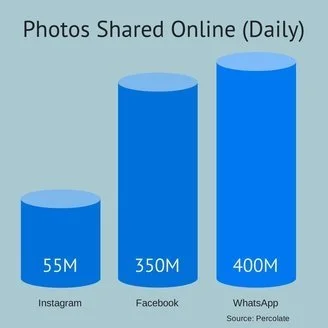Art Class for the Digital Age: The Emergence of the ‘Visual-First’ Social Web
It’s been nearly 30 years and I still haven’t fully recovered. My fifth grade teacher, Mrs. Lynch, decided to enter our class in a newspaper contest to submit a proposed advertising idea and drawing for a well-known local furniture store. I was toast.
Suffice to say, I didn’t win the contest. Fortunately, though, I grew an appreciation of the importance of simple and compelling design over the years (note: a big part of this includes surrounding myself with creative professionals who seamlessly make magic out of a rough sketch or concept).
All said, my profession is about to change — big time. And unlike Mrs. Lynch’s fifth grade classroom, a noble try simply won’t be good enough.
In short, the ever-evolving social Web and demand for a visual-first approach requires that everyone in public affairs and communications learn how to create and design compelling visual content. If you don’t believe me, look at how Twitter and Facebook have changed their layouts in recent months. Same goes for platforms like Pinterest and Instagram, which are experiencing meteoric growth. Then ask yourself: would you rather view a sharable graphic that inspires you or read a three-paragraph diatribe that leaves you with a cynical view of the person leading it?
It’s entirely possible that the latter will someday be filtered out altogether.
As I wrote earlier this month, the rise of content pollution online calls for every PR professional to carefully assess what is being produced across social and traditional media (and why). In short, we’re putting far too much emphasis on what we think will resonate with key audiences and not prioritizing our obligation to add to the broader online conversation. As Andrew Bowins, SVP of Communications at MasterCard puts it, “if we keep feeding uninformed content to those who rely on us — slowly, but surely — they will tune us out.”
Andrew’s right — the challenges are mounting and we’re all guilty of creating them. However, this doesn’t mean that the demand is going away. Just the opposite is true: the growth (and future emergence) of social media channels will create a higher demand for high-quality and visual content that will be broadly shared and syndicated across all types of networks.
According to a recent report by NYC-based technology firm Percolate, 400 million photos are shared every day on WhatsApp, 350 million on Facebook and 55 million on Instagram.
At the same time, user-friendly tools like Canva allow just about anyone with a computer to become their own designer. It’s no longer a prerequisite to know the ins and outs of Photoshop to produce a compelling graphic or banner. We’re all about to join this elite club whether we want to or not. We’re entering a new content creation world in which ‘visual’ drives our creative thought process.
Granted, the written word will always define effective strategic communications. Any successful brand is driven by noteworthy ideas that are captured by compelling headlines, data points or sound bytes. But relying on others to produce creative content is quickly becoming a dated approach. The changing scale and pace of the evolving Internet will allow no less.
As for that furniture store in central Massachusetts, a cursory Google search shows that it’s still very much in business and actively touting a worthwhile lesson for digital content creators: “We keep our overhead LOW and the quality HIGH — giving you the most value for your money!”
Original Seen in Huffington Post.


